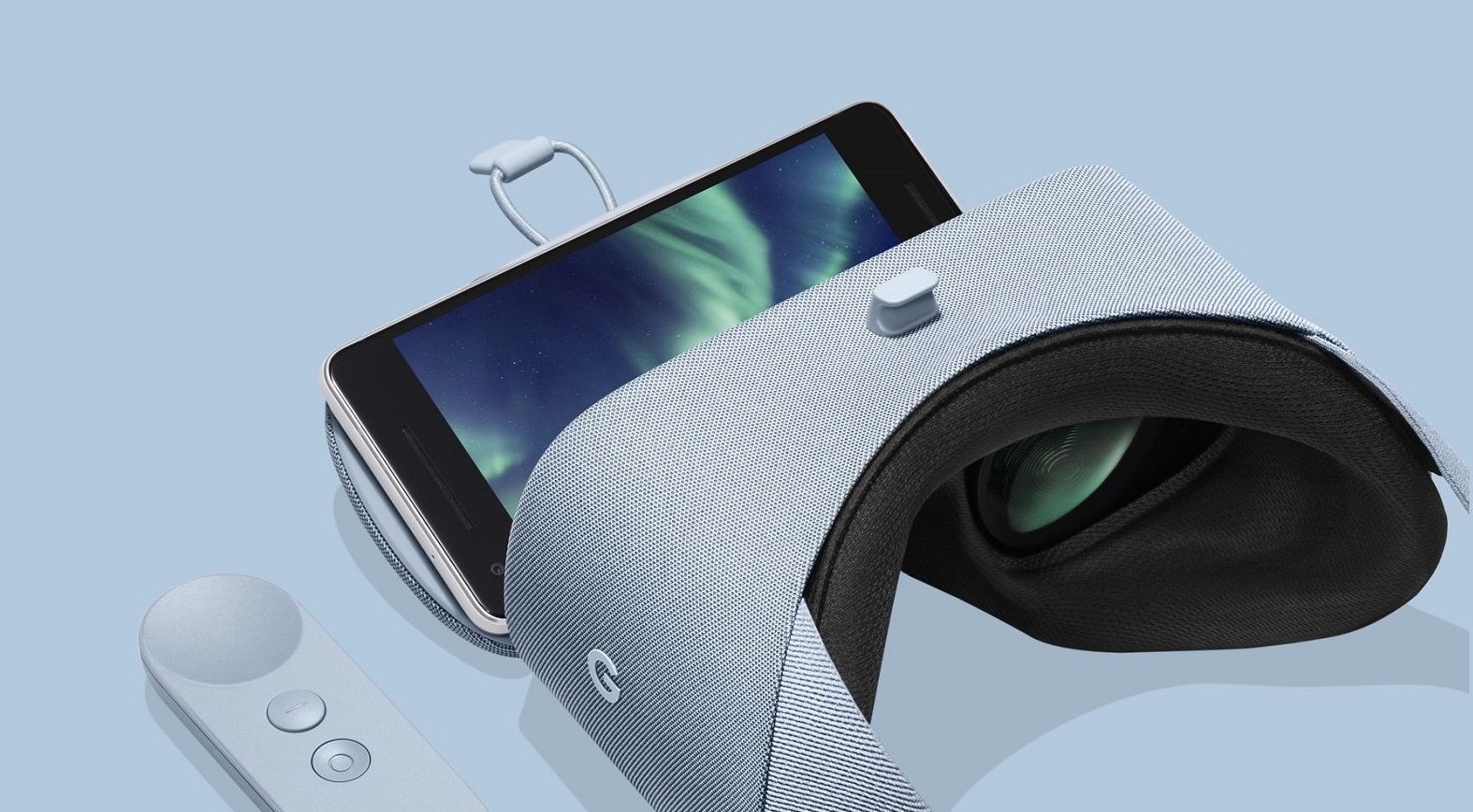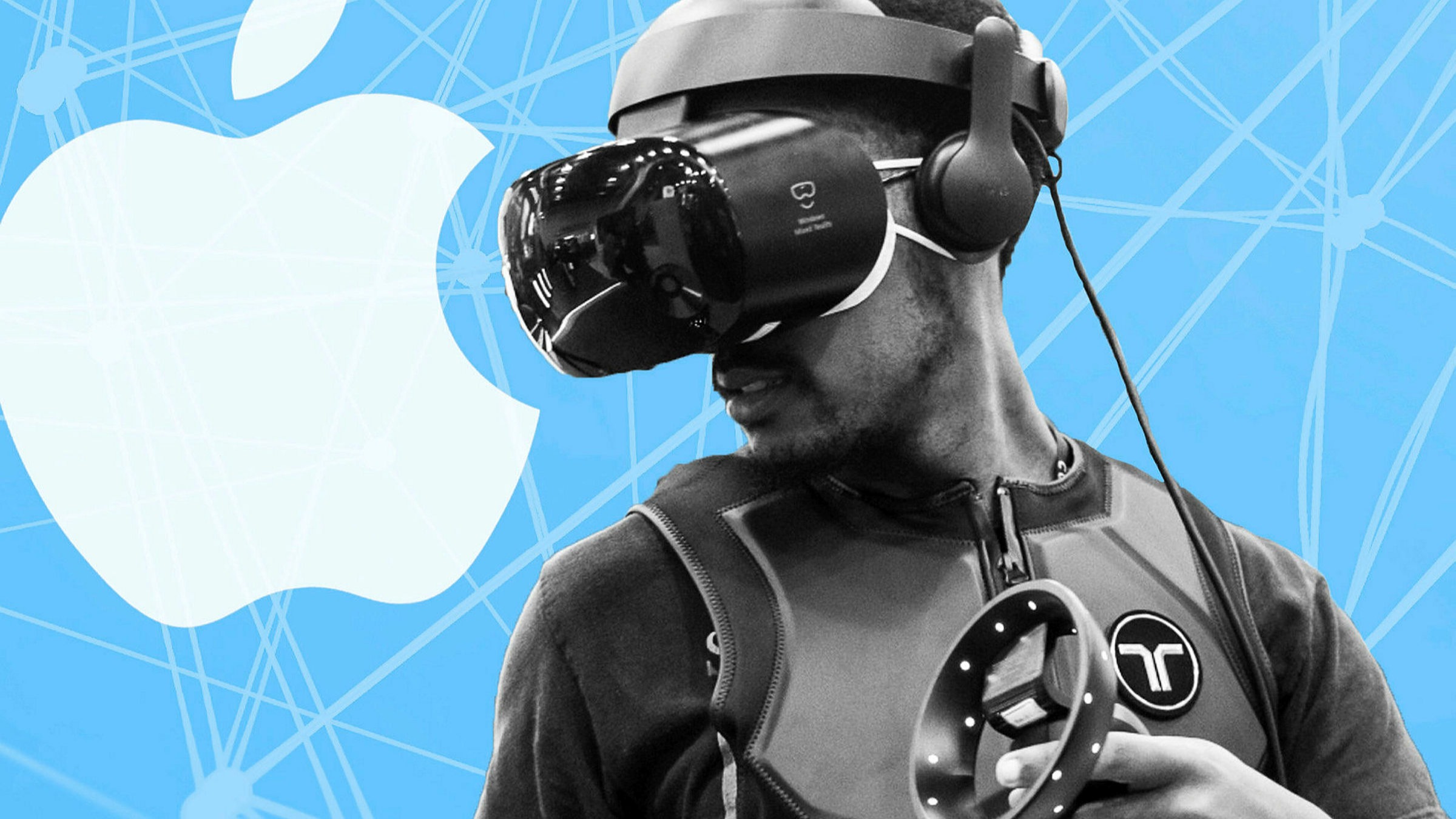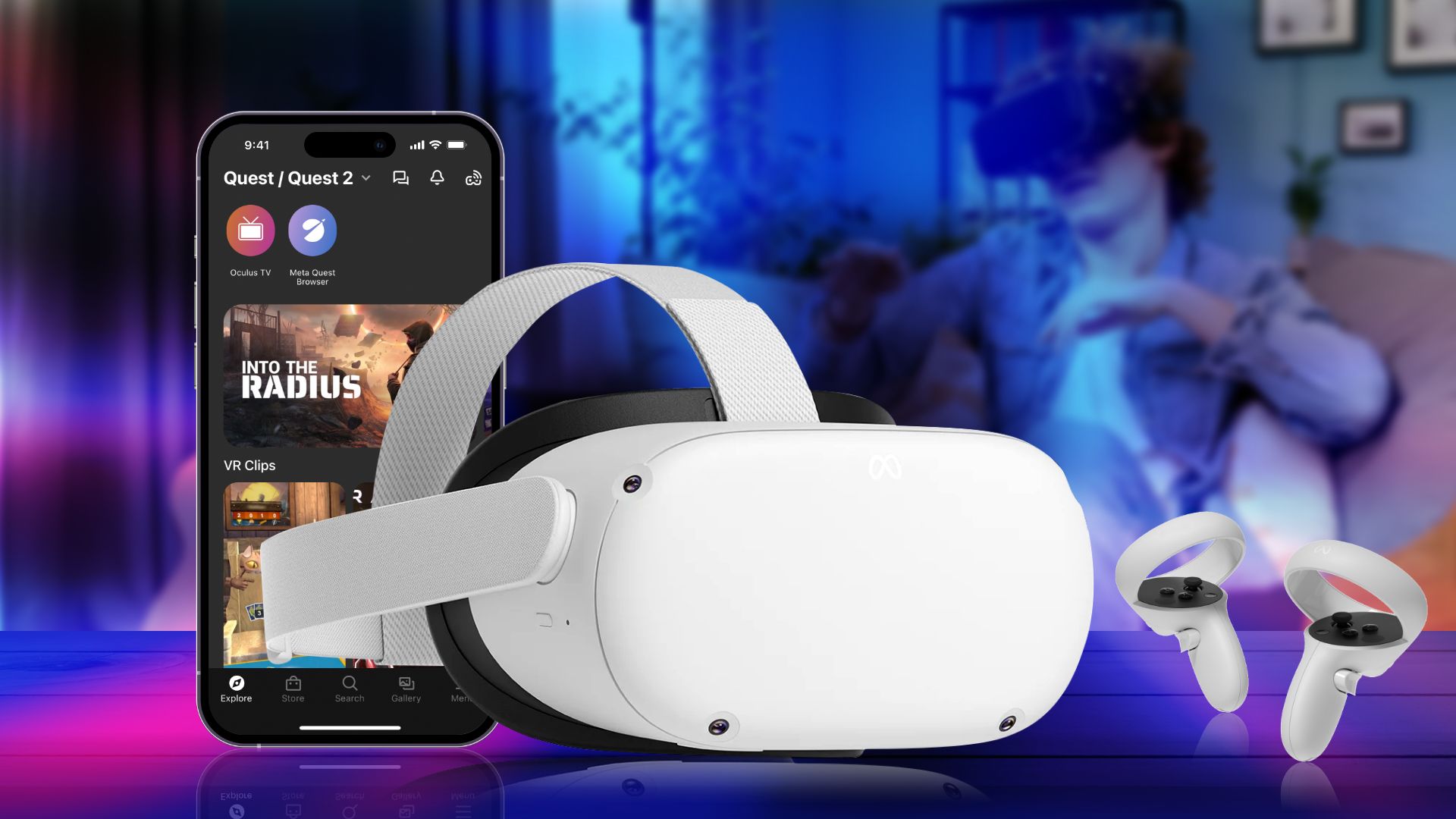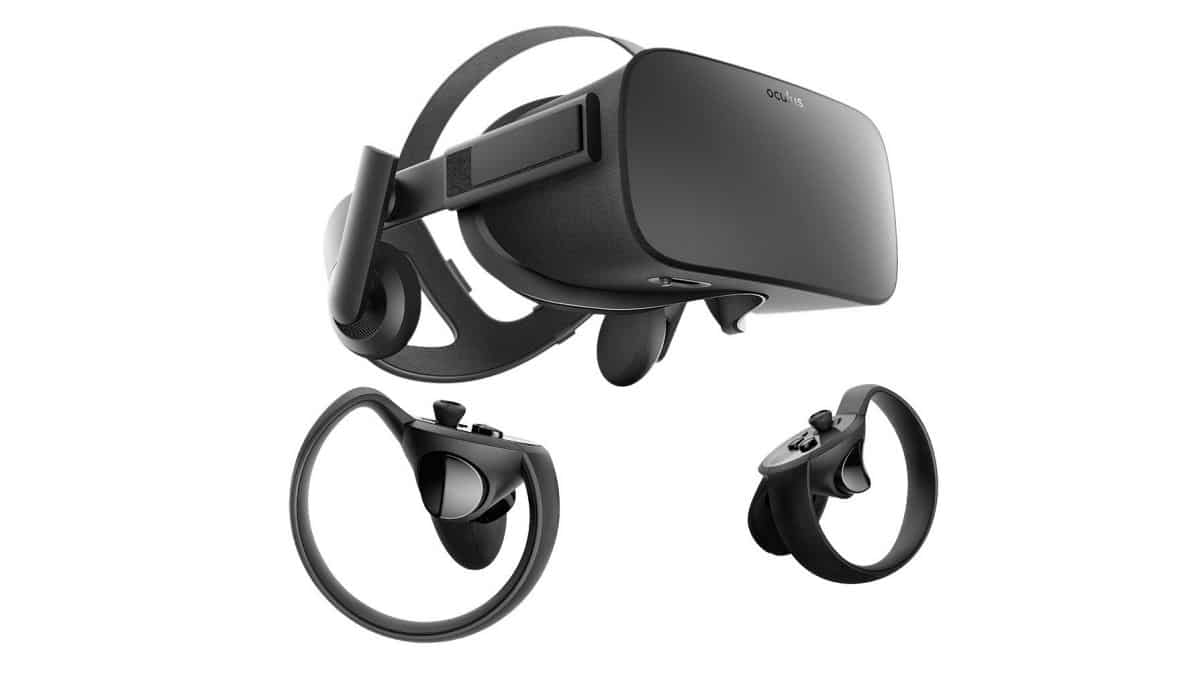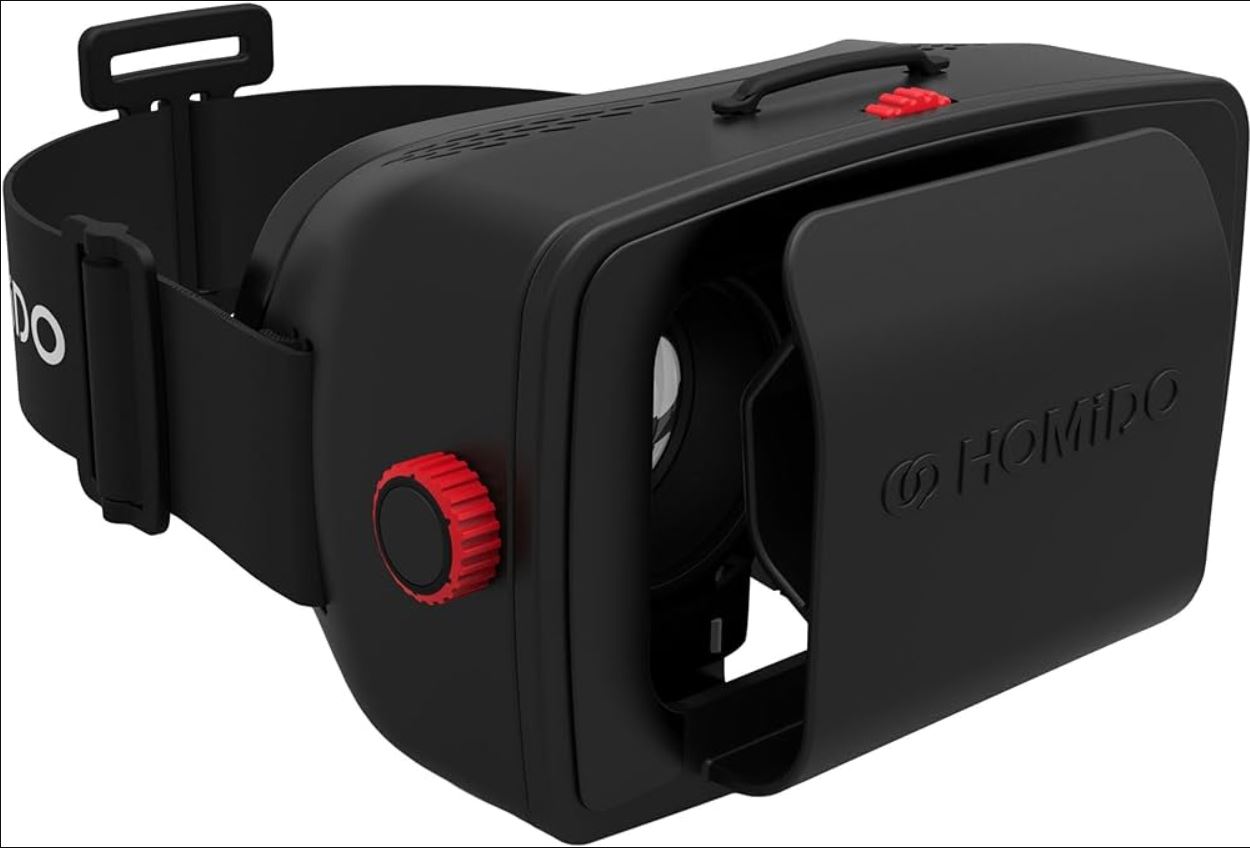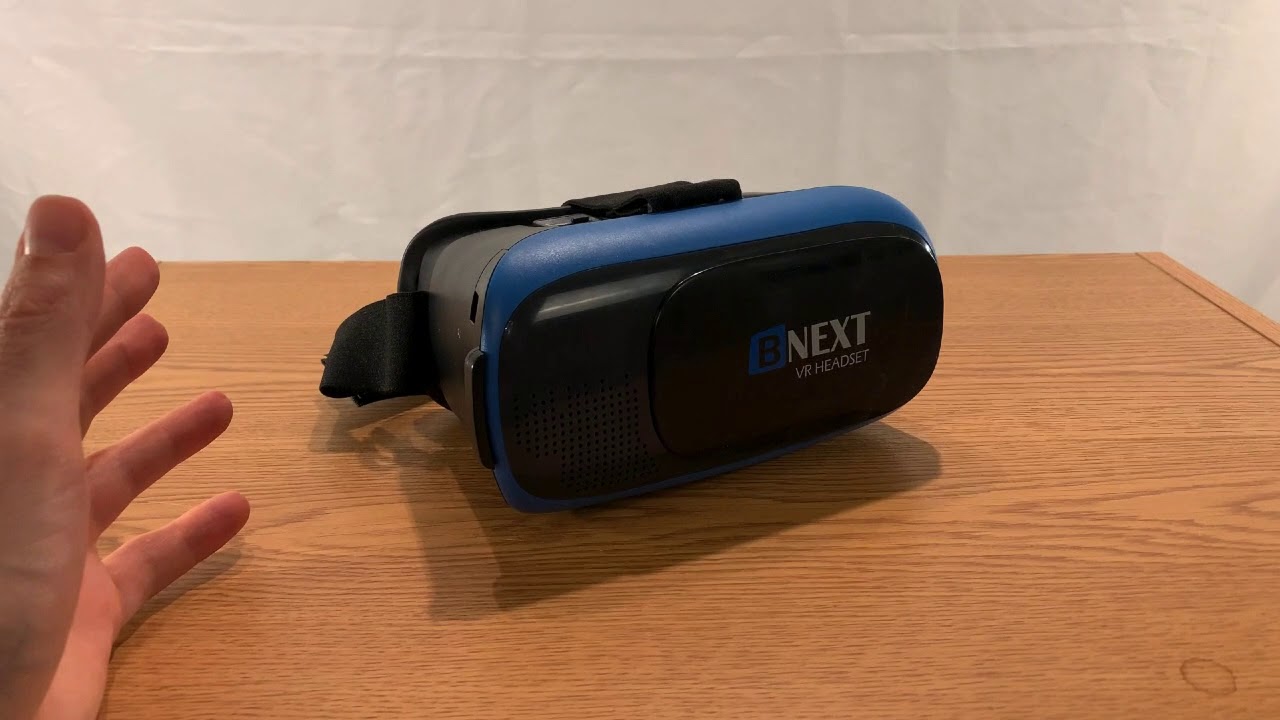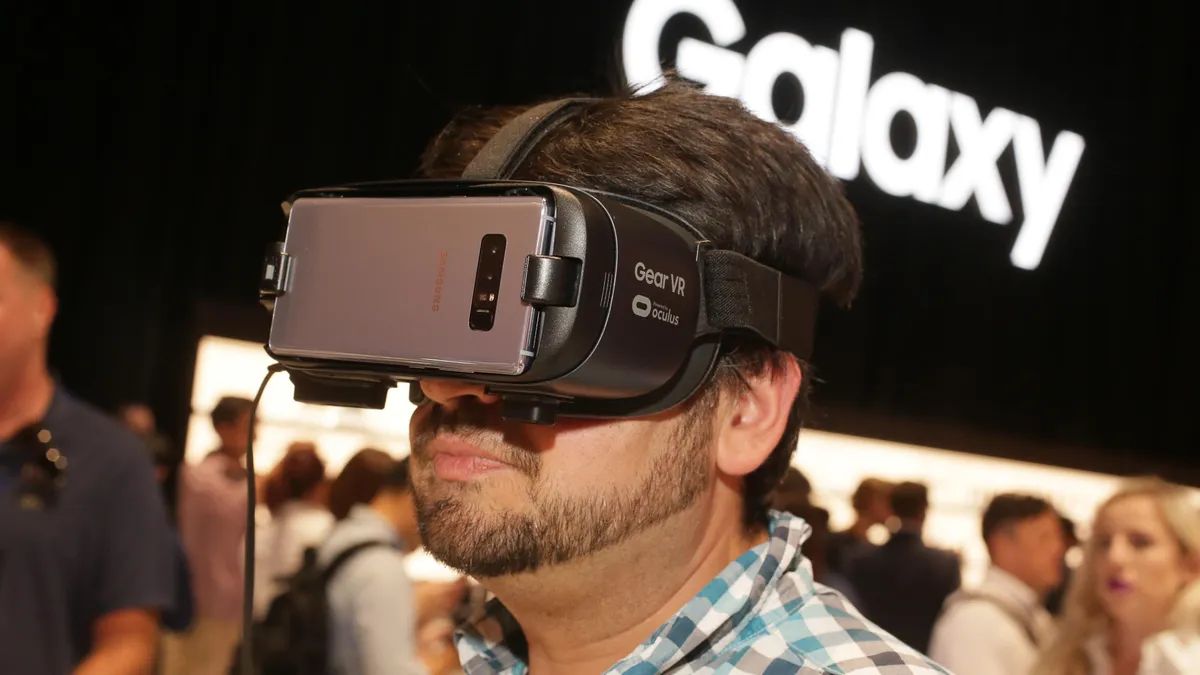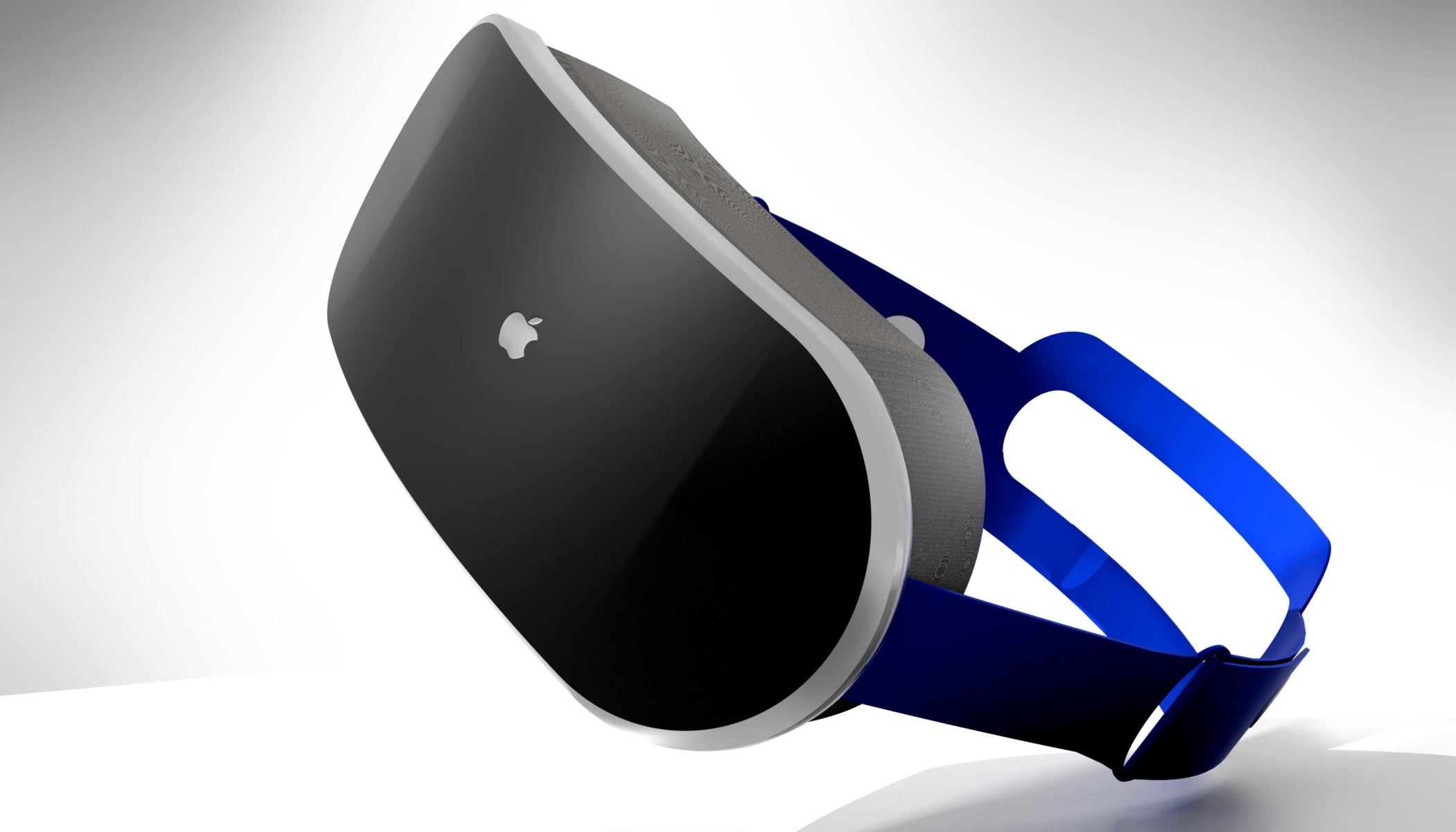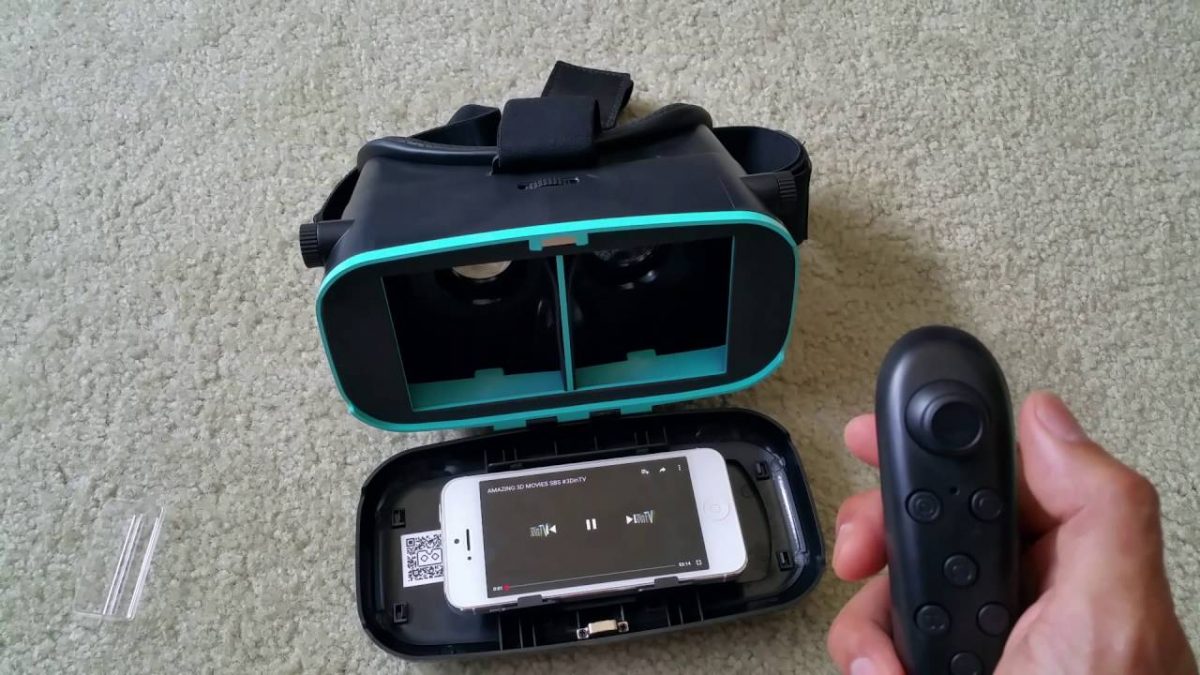Introduction
Welcome to the world of Virtual Reality (VR)! Whether you’re a gaming enthusiast or someone looking to explore new immersive experiences, Virtual Reality offers a whole new dimension of entertainment. With the advancements in technology, Virtual Reality is no longer restricted to high-end devices. Smartphones have opened up the door to a more accessible and portable VR experience.
In this article, we will explore what Virtual Reality is, how it works on smartphones, and the compatibility requirements to enjoy VR on your device. We will also highlight some Android and iOS phones that are compatible with Virtual Reality, as well as recommend the best budget and flagship options. Additionally, we will provide some useful tips for optimizing your phone for the best Virtual Reality experience.
Virtual Reality refers to a simulated experience that can be similar to or completely different from the real world. It involves the use of specially designed headsets, also known as VR goggles or VR glasses, which allow users to enter a virtual environment and interact with it in a seemingly real and natural way. The immersive nature of Virtual Reality makes it a popular choice for gaming, movies, educational experiences, and even social interactions.
So how does Virtual Reality work on smartphones? Instead of relying on dedicated VR systems, smartphones utilize their built-in sensors, display, and processing power to deliver a VR experience. By connecting the smartphone to a VR headset, the user can enjoy a wide range of VR content and games. This accessibility has made Virtual Reality more affordable and convenient, as users can now use their existing smartphones to delve into the world of VR.
However, not all smartphones are compatible with Virtual Reality. There are certain requirements that a phone needs to meet in order to provide a smooth and immersive VR experience. These requirements include a powerful processor, a high-definition display, adequate storage, and gyroscopic sensors for accurate head tracking. Lack of these features can result in a subpar VR experience, with lagging visuals or poor tracking.
What is Virtual Reality?
Virtual Reality (VR) is a technology that creates a simulated environment, which can be similar to or completely different from the real world. It immerses users into a digitally generated world, allowing them to interact and experience the environment as if they were physically present.
The concept of Virtual Reality has been around for decades, but recent advancements in technology have made it more accessible and widespread. With the help of special VR headsets, users can enter a virtual world and have a sense of presence within that environment.
VR experiences can range from gaming and entertainment to educational and professional applications. In the gaming industry, Virtual Reality offers players a truly immersive gameplay experience. Instead of merely observing the action on a screen, players are transported into the game environment, where they can explore and interact with objects and characters.
Beyond gaming, Virtual Reality has found utility in various fields. In healthcare, VR is used for training medical professionals in realistic simulated environments, allowing them to practice complex procedures without the need for real patients. Architects and designers can use VR to create virtual walkthroughs of buildings and spaces, providing clients with a realistic preview of the final product.
One of the key components of Virtual Reality is the use of VR headsets or goggles. These devices are equipped with high-resolution displays, gyroscopic sensors, and sometimes even motion tracking systems. The displays wrap around the user’s field of view, filling their vision with the virtual environment.
As the user moves their head, the sensors in the VR headset track their movements and adjust the display accordingly. This tracking allows for a more immersive experience, as the virtual world aligns with the user’s perspective in real-time.
In addition to headsets, VR experiences often involve other peripherals like handheld controllers. These controllers enable users to interact with and manipulate virtual objects within the simulated environment. For example, in a VR game, users can swing a virtual sword or grab and throw objects using their controllers.
Virtual Reality is continuously evolving and pushing boundaries, with technological advancements improving visual fidelity, tracking accuracy, and overall immersion. As the industry grows, more developers and content creators are embracing VR, leading to a wider range of experiences and applications for users to enjoy.
How Does Virtual Reality Work on Smartphones?
Virtual Reality (VR) on smartphones works by utilizing the built-in features and capabilities of the device to deliver an immersive virtual experience. With the help of specially designed headsets and compatible apps, users can transform their smartphones into portable VR devices.
When it comes to VR on smartphones, there are two main components involved: the smartphone itself and the VR headset. The smartphone serves as the display and processing unit, while the VR headset provides the optics and the means to interact with the virtual environment.
To begin, users need to ensure that their smartphones meet the minimum requirements for VR compatibility. These requirements include a fast and powerful processor, a high-resolution display, and gyroscopic sensors for accurate head tracking. The smartphone also needs enough storage space to store VR apps and content.
Once the smartphone is ready, users can connect it to a compatible VR headset. The headset typically consists of a pair of lenses that are positioned in front of the smartphone’s display. These lenses help in magnifying and distorting the images on the screen, providing a more immersive and wide-field-of-view experience.
There are several types of VR headsets available for smartphones, ranging from basic cardboard or plastic viewers to more advanced ones with built-in sensors and controllers. The choice of headset depends on the level of immersion and interactivity desired by the user.
Once the smartphone is inserted into the headset and securely placed on the user’s head, the VR app or game is launched. The smartphone’s screen is split into two halves, one for each eye, using a technique called stereoscopic rendering. This split-screen effect allows for a 3D effect when viewed through the headset.
As the user moves their head, the smartphone’s gyroscope and accelerometer sensors track these movements and provide real-time feedback to the VR app. This enables a seamless and responsive interaction within the virtual environment, as the app adjusts the visuals based on the user’s head movements.
In addition to head tracking, many VR apps also support handheld controllers or input devices that allow users to interact with the virtual world. These controllers can offer more precise and intuitive control over objects in the virtual environment, enhancing the overall immersive experience.
Although VR on smartphones may not offer the same level of graphical fidelity and processing power as dedicated VR systems, it is a convenient and affordable way for users to experience Virtual Reality. With an increasing number of VR apps and content available for smartphones, the possibilities of virtual exploration and entertainment have become more accessible to a wider audience.
Compatibility Requirements for Virtual Reality
Virtual Reality (VR) offers an immersive and interactive experience, but not all smartphones are compatible with this technology. To enjoy a smooth and seamless VR experience, certain compatibility requirements need to be met. These requirements ensure that the smartphone has the processing power and features necessary to handle the demands of VR applications.
First and foremost, the smartphone needs to have a powerful processor. VR applications require significant processing power to render high-resolution graphics and maintain a smooth frame rate. Processors with multiple cores and high clock speeds can handle the computational demands of VR, resulting in a more immersive experience with minimal lag or stuttering.
Furthermore, a high-resolution display is vital for a crisp and detailed VR experience. Smartphone displays with a minimum resolution of 1080p (1920 x 1080 pixels) are recommended for VR. Higher pixel densities offer sharper visuals, helping to create a more realistic and immersive virtual environment.
Gyroscopic sensors are another essential requirement for VR compatibility. These sensors enable accurate head tracking, allowing the user’s movements to be translated into the virtual environment. Gyroscopic sensors measure the orientation and rotation of the smartphone, ensuring that the displayed visuals match the user’s head movements in real-time. It is important to note that not all smartphones have gyroscope sensors, so it is crucial to check the specifications before purchasing a device for VR.
Another consideration is the availability of sufficient storage space. VR applications, games, and immersive content can occupy significant storage on the smartphone. It is advisable to have ample internal storage or the ability to expand storage through external memory cards to accommodate VR content without compromising the overall performance of the device.
Besides the technical requirements, the physical design of the smartphone also plays a role in its compatibility with VR. The smartphone should have a secure and stable attachment mechanism with the VR headset. The alignment of the phone’s display with the lenses in the headset is crucial to ensure proper focal length and a comfortable viewing experience.
It’s worth noting that while VR is typically associated with Android smartphones, some iOS devices also support Virtual Reality. However, the availability and compatibility of VR apps and games may vary between the Android and iOS platforms.
By ensuring that your smartphone meets these compatibility requirements, you can fully embrace the world of Virtual Reality and enjoy a rich and immersive VR experience.
Android Phones Compatible with Virtual Reality
Android smartphones offer a wide range of options for users looking to experience Virtual Reality (VR) on their devices. Android’s open-source nature has allowed for the development of numerous VR apps and games, making it a popular choice for VR enthusiasts. Here are some Android phones that are compatible with Virtual Reality:
1. Samsung Galaxy S21 Ultra: The Samsung Galaxy S21 Ultra is a top-tier flagship phone that delivers an exceptional VR experience. It features a powerful processor, a stunning AMOLED display with a high refresh rate, and a large battery for extended VR sessions. The S21 Ultra also supports Samsung’s Gear VR headset, providing a seamless VR experience.
2. Google Pixel 5: The Google Pixel 5 is another excellent choice for VR enthusiasts. It has a powerful processor, a high-resolution OLED display, and offers a clean Android experience. The Pixel 5 is compatible with various VR platforms, including Google Cardboard and Daydream, allowing users to explore a wide range of VR content.
3. OnePlus 9 Pro: The OnePlus 9 Pro is a flagship phone known for its performance and display quality. It boasts a fast processor, a fluid AMOLED display with a high refresh rate, and ample storage space. The OnePlus 9 Pro offers a great VR experience when paired with compatible VR headsets.
4. ASUS ROG Phone 5: For gaming enthusiasts, the ASUS ROG Phone 5 is an excellent choice. This gaming-focused phone features a powerful processor, a high-refresh-rate AMOLED display, and a large battery to support long gaming sessions. With its gaming-centric features and compatibility with various VR headsets, the ROG Phone 5 provides an immersive VR gaming experience.
5. Moto G Power (2021): If you’re on a budget, the Moto G Power (2021) offers a decent VR experience without breaking the bank. It has a capable processor, a large display, and a long-lasting battery. While it may not provide the same level of performance as flagship devices, it is still a viable option for experiencing VR on a budget.
These are just a few examples of Android phones that are compatible with Virtual Reality. However, it’s important to note that compatibility can extend beyond these specific models. As long as a smartphone meets the necessary requirements for VR, it can offer an immersive VR experience when paired with compatible VR headsets and apps.
Before diving into Virtual Reality, be sure to check the compatibility of your specific Android phone with the VR platforms and headsets you intend to use. This will ensure a seamless and enjoyable VR experience on your Android device.
iOS Phones Compatible with Virtual Reality
While Android is often associated with Virtual Reality (VR), iOS devices also offer compatibility with VR applications and experiences. Apple’s iOS ecosystem has seen an increase in VR support, allowing users to explore immersive virtual worlds on their iPhones. Here are some iOS phones that are compatible with Virtual Reality:
1. iPhone 12 Pro Max: The iPhone 12 Pro Max is Apple’s flagship device known for its powerful performance and advanced features. With its A14 Bionic chip, OLED display, and precise motion sensors, the iPhone 12 Pro Max offers a superb VR experience. It is compatible with a range of VR apps and headsets, such as the popular Google Cardboard.
2. iPhone 11 Pro: The iPhone 11 Pro is a previous-generation flagship device that still delivers impressive VR capabilities. Powered by the A13 Bionic chip and featuring an OLED display, the iPhone 11 Pro can handle demanding VR applications. It offers a seamless VR experience when paired with compatible VR headsets like the Oculus Quest.
3. iPhone SE (2020): For those on a budget, the iPhone SE (2020) is a cost-effective option for VR enthusiasts. It shares the same A13 Bionic chip found in the iPhone 11 Pro, providing ample processing power for VR applications. While it lacks some of the advanced features of the flagship models, it still offers a smooth and enjoyable VR experience.
4. iPhone XR: The iPhone XR is another viable option for VR compatibility. It features Apple’s A12 Bionic chip and a Liquid Retina display, providing a good balance between performance and affordability. The iPhone XR supports various VR apps and headsets, making it a suitable choice for casual VR enthusiasts.
5. iPhone X: As one of Apple’s early models to feature an OLED display, the iPhone X offers a visually appealing VR experience. With its A11 Bionic chip and motion sensors, the iPhone X can handle VR applications with ease. It may not have the latest hardware, but it is still capable of delivering an immersive VR experience.
These iOS phones are just a few examples of devices that are compatible with Virtual Reality. However, compatibility can extend to other models as well. As long as the iOS device meets the necessary requirements for VR, it can offer a rich and immersive VR experience when paired with compatible VR apps and headsets.
Before diving into the world of Virtual Reality, be sure to check the compatibility of your specific iOS device with the VR platforms and headsets you plan to use. This will ensure a seamless and enjoyable VR experience on your iPhone.
Best Budget Phones for Virtual Reality
Virtual Reality (VR) has become more accessible to a wider audience, including those on a budget. If you’re looking to experience VR without breaking the bank, there are several budget-friendly phones that offer decent VR capabilities. Here are some of the best budget phones for Virtual Reality:
1. Moto G Power (2021): The Moto G Power (2021) is a budget-friendly Android phone that provides a decent VR experience. It features a capable processor, a large display, and a long-lasting battery, making it suitable for extended VR sessions. While it may not offer the same level of performance as high-end devices, it is a solid option for those on a budget.
2. Google Pixel 4a: The Google Pixel 4a is another affordable option for VR enthusiasts. It packs a clean and stock Android experience, a capable processor, and a vibrant OLED display. The Pixel 4a offers seamless compatibility with popular VR platforms like Google Cardboard and Daydream, allowing users to enjoy a range of VR content.
3. Samsung Galaxy A52: The Samsung Galaxy A52 combines affordability with impressive features for VR. It boasts a powerful processor, a Super AMOLED display with a high refresh rate, and ample storage capacity. The Galaxy A52 supports Samsung’s Gear VR headset, opening up a world of VR experiences at a budget-friendly price point.
4. iPhone SE (2020): For iOS users on a budget, the iPhone SE (2020) is a cost-effective choice for VR compatibility. It shares the same A13 Bionic chip as the iPhone 11 Pro, providing ample processing power for VR applications. Although it lacks some advanced features, it still delivers a smooth and enjoyable VR experience.
5. ASUS ZenFone 7: The ASUS ZenFone 7 offers great value for VR enthusiasts on a budget. It features a powerful processor, a large AMOLED display, and a flip camera setup that doubles as a front and rear-facing camera. The ZenFone 7’s performance makes it a suitable choice for experiencing VR content without breaking the bank.
When considering budget phones for VR, it’s important to manage expectations. While these phones may not offer the same level of performance and graphical fidelity as their high-end counterparts, they still provide an entry point into the world of Virtual Reality. The immersive experience and availability of VR content make them a worthwhile investment for those looking to explore VR on a budget.
Before making a purchase, it’s recommended to thoroughly research the specifications and compatibility of the selected budget phone with VR platforms and headsets. This will ensure a smooth and enjoyable VR experience without compromising on affordability.
Best Flagship Phones for Virtual Reality
When it comes to Virtual Reality (VR), flagship phones offer the best performance and features for a truly immersive experience. These high-end devices are equipped with powerful processors, high-resolution displays, and advanced features that can handle the demands of VR applications. If you’re looking to dive deep into the world of VR, here are some of the best flagship phones for Virtual Reality:
1. Samsung Galaxy S21 Ultra: The Samsung Galaxy S21 Ultra is an exceptional flagship phone for VR enthusiasts. It boasts a powerful processor, a stunning AMOLED display with a high refresh rate, and a large battery for extended VR sessions. The S21 Ultra is also compatible with Samsung’s VR headset, delivering a seamless and immersive VR experience.
2. iPhone 12 Pro Max: For iOS users, the iPhone 12 Pro Max is one of the best flagship phones for VR. It features Apple’s powerful A14 Bionic chip, an OLED display, and precise motion sensors. Combined with its compatibility with various VR platforms and headsets, such as Google Cardboard, the iPhone 12 Pro Max provides an impressive VR experience.
3. Google Pixel 5: The Google Pixel 5 is another top-tier flagship phone that offers great VR capabilities. It features a powerful processor, a high-resolution OLED display, and offers seamless compatibility with Google Cardboard and Daydream. The Pixel 5 delivers a smooth and immersive VR experience, making it an excellent choice for VR enthusiasts.
4. OnePlus 9 Pro: The OnePlus 9 Pro is renowned for its performance and display quality, making it an ideal flagship phone for VR. It boasts a fast processor, a fluid AMOLED display with a high refresh rate, and ample storage space. The OnePlus 9 Pro’s compatibility with various VR headsets enhances the overall VR experience.
5. ASUS ROG Phone 5: Designed specifically for gaming, the ASUS ROG Phone 5 is an exceptional flagship phone for VR gaming enthusiasts. With its powerful processor, high-refresh-rate AMOLED display, and gaming-centric features, the ROG Phone 5 provides an immersive and lag-free VR gaming experience.
These flagship phones excel in performance and offer the necessary hardware to handle demanding VR applications. They provide a high-quality VR experience, delivering stunning visuals, smooth performance, and accurate head tracking. However, it’s important to keep in mind that the compatibility of VR platforms and headsets may vary across different models.
Before making a purchase, thoroughly research the specific flagship phone’s compatibility with the VR platforms and headsets you plan to use. This will ensure optimal performance and a truly immersive Virtual Reality experience on your high-end device.
Tips for Optimizing Your Phone for Virtual Reality
To ensure a smooth and enjoyable Virtual Reality (VR) experience on your smartphone, it’s important to optimize your device for optimal performance. Here are some helpful tips for optimizing your phone for Virtual Reality:
1. Close Unnecessary Background Apps: Before launching a VR app or game, close any unnecessary background apps running on your phone. This helps free up system resources, ensuring that your phone can dedicate its processing power to delivering a smooth VR experience.
2. Free Up Storage Space: VR applications and content can take up a significant amount of storage space on your phone. Ensure that you have ample storage available by deleting unnecessary files or moving them to external storage. This prevents performance issues and allows your device to run VR content smoothly.
3. Enable Airplane Mode: To minimize interruptions and distractions during your VR session, consider enabling airplane mode or turning off notifications. This ensures that incoming calls, messages, and other notifications don’t disrupt your VR experience.
4. Adjust Display Settings: Experiment with different display settings to find the optimal configuration for your VR experience. Adjust the brightness, color temperature, and screen timeout settings to enhance image quality and reduce eye strain during extended VR sessions.
5. Use Comfortable and Secure Headsets: Invest in a comfortable and secure VR headset that fits your phone properly. Ill-fitting headsets can cause discomfort and may affect your overall VR experience. Make sure the phone is securely attached to the headset to prevent any accidental falls during use.
6. Keep Your Phone Cool: VR applications can be resource-intensive, causing your phone to generate heat. To prevent overheating, make sure your phone is well-ventilated and avoid using it in direct sunlight or in hot environments. Consider using a cooling pad or fan attachment to help dissipate heat during extended VR sessions.
7. Manage Battery Consumption: VR applications can drain your phone’s battery quickly. Before starting a VR session, ensure your phone is fully charged or connected to a power source. Additionally, adjust the screen brightness and turn off unnecessary features like Wi-Fi and Bluetooth to optimize battery life.
8. Ensure a Stable Internet Connection: Some VR apps may require an internet connection for updates or online content. Ensure that you have a stable and reliable internet connection to prevent disruptions during your VR experience.
By following these tips, you can optimize your phone for Virtual Reality, ensuring a smooth and immersive experience. Remember to regularly update your VR apps and keep your phone’s software up to date to take advantage of any performance enhancements and new features that may be introduced.
Conclusion
Virtual Reality (VR) has transformed the way we experience entertainment, gaming, and even everyday activities. With the advancements in smartphone technology, VR has become more accessible, allowing users to enjoy immersive experiences right from their handheld devices.
In this article, we explored the world of Virtual Reality on smartphones. We discussed what VR is and how it works on smartphones, as well as the compatibility requirements for a smooth VR experience. For both Android and iOS users, we highlighted some phones that are compatible with Virtual Reality, whether you’re on a budget or looking for high-end flagship devices.
We also provided tips to optimize your phone for Virtual Reality, such as closing unnecessary background apps, freeing up storage space, and adjusting display settings. These tips ensure that your phone is ready to deliver a seamless and immersive VR experience.
Whether you choose an Android or iOS device, Virtual Reality offers a limitless world of exploration, gaming, education, and more. From gaming enthusiasts seeking thrilling adventures to professionals looking for immersive training experiences, VR provides a unique and captivating way to interact with digital environments.
As technology continues to advance, we can expect Virtual Reality on smartphones to become even more immersive and realistic. Manufacturers are constantly pushing the boundaries of what is possible, delivering better processors, higher-resolution displays, and improved motion tracking capabilities.
So, whether you’re enjoying a thrilling virtual game, exploring far-off places, or taking part in immersive educational experiences, Virtual Reality on smartphones opens up a world of entertainment and possibilities.
Remember, always check the compatibility of your phone with VR platforms and headsets, and follow the optimization tips outlined in this article for the best VR experience possible. Embrace Virtual Reality on your smartphone and get ready to be transported to new and exciting digital realms. The adventure awaits!







